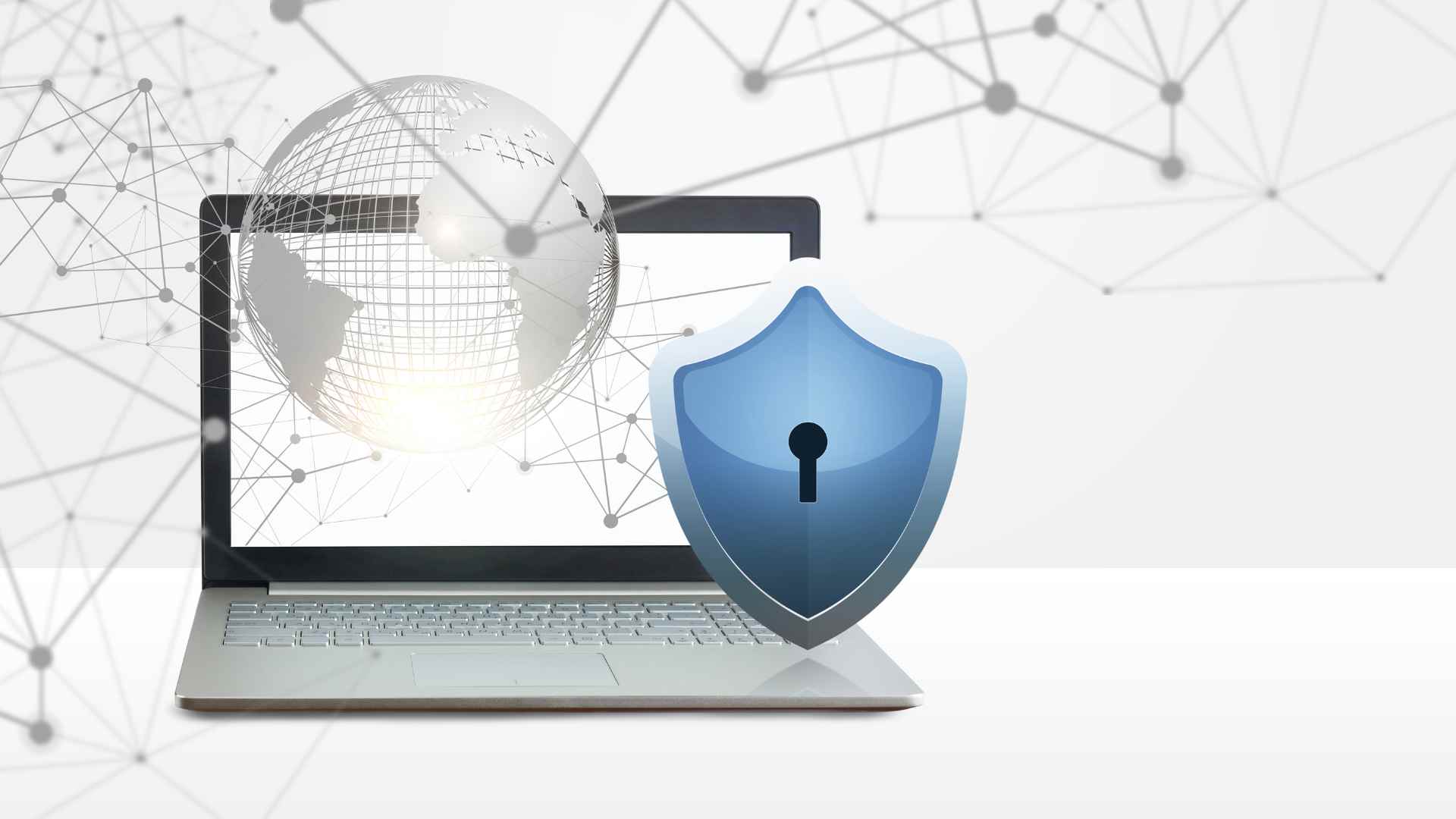Table Of Contents
You cannot overstate the importance of cybersecurity. Especially in an era dominated by digital advancements. Businesses and organisations are increasingly reliant on technology to drive operations. This makes them more susceptible to cyber threats.
66% of small businesses are concerned about cybersecurity risk. Forty-seven per cent lack the understanding to protect themselves. This leaves them vulnerable to the high cost of an attack.
Conveying the tangible value of cybersecurity initiatives to decision-makers can be challenging. The need for protection is clear, but executives want hard data to back up spending.
We’ll explore strategies to effectively show the concrete benefits of cybersecurity measures. These can help you make the case for stronger measures at your company. As well as help you understand how your investments return value.
How to Show the Monetary Benefits of Cybersecurity Measures
Why does demonstrating the monetary value of digital security measures pose a challenge? The benefits of cybersecurity are often indirect and preventive. This differs from tangible assets with direct revenue-generating capabilities.
Investments in robust cybersecurity protocols and technologies are akin to insurance policies. They aim to mitigate potential risks rather than generate immediate financial returns. Quantifying the exact monetary value of avoided breaches or data loss can be elusive. These potential costs are hypothetical. They’re also contingent on the success of the cybersecurity measures in place.
Additionally, success is often measured by incidents that do not occur. This complicates efforts to attribute a clear monetary value. As a result, companies grapple with finding certain metrics. Ones that effectively communicate this economic impact.
Below are several ways to translate successful cybersecurity measures into tangible value.
1. Quantifying Risk Reduction
What’s one of the most compelling ways to showcase the value of cybersecurity? It’s by quantifying the risk reduction. Companies design cybersecurity initiatives to mitigate potential threats. By analysing historical data and threat intelligence, organizations can provide concrete evidence. Evidence of how these measures have reduced the likelihood and impact of incidents.
2. Measuring Incident Response Time
The ability to respond swiftly to a cyber incident is crucial in minimising damage. Metrics that highlight incident response time can serve as a key indicator. They can illustrate the effectiveness of cybersecurity efforts.
It’s also possible to estimate downtime costs. And then correlate those to a reduction in the time it takes to detect and respond to a security incident. This demonstrates potential savings based on faster response.
The average cost of downtime according to Pingdom is as follows:
- Up to $427 per minute (Small Business)
- Up to $16,000 per minute (Large Business)
3. Financial Impact Analysis
Cybersecurity incidents can have significant financial implications. Businesses can quantify the potential losses averted due to cybersecurity measures. Businesses do this by conducting a thorough financial impact analysis.
This can include costs associated:
- Downtime
- Data breaches
- Legal consequences
- Reputational damage
4. Monitoring Compliance Metrics
Many industries have regulatory requirements for data protection and cybersecurity. Demonstrating compliance with these regulations avoids legal consequences. It also showcases a commitment to safeguarding sensitive information. Track and report on compliance metrics. This can be another tangible way to exhibit the value of cybersecurity initiatives.
5. Employee Training Effectiveness
Human error remains a significant factor in cybersecurity incidents. Use metrics related to the effectiveness of employee training programs. This can shed light on how well the company has prepared its workforce. Prepared it to recognize and respond to potential threats. A well-trained workforce contributes directly to the company’s cybersecurity defences.
6. User Awareness Metrics
Beyond training effectiveness, there are user awareness metrics. This gauges how well employees understand and adhere to cybersecurity policies. Use metrics such as the number of reported phishing attempts. As well as password changes and adherence to security protocols. These metrics provide insights into the human element of cybersecurity.
7. Technology ROI
Investing in advanced cybersecurity technologies is a common practice. Showcasing the return on investment (ROI) can be a powerful way to show value. Use metrics that assess the effectiveness of security technologies. Specifically, in preventing or mitigating incidents. Such as the number of blocked threats. This can highlight the tangible benefits.
8. Data Protection Metrics
For organisations handling sensitive data, metrics related to data protection are paramount. This includes monitoring the number of data breaches prevented. As well as data loss incidents and the efficacy of encryption measures. Show a strong track record in protecting sensitive information. This adds tangible value to cybersecurity initiatives.
9. Vendor Risk Management Metrics
Many organisations rely on third-party vendors for various services. Assessing and managing the cybersecurity risks associated with these vendors is crucial. Metrics related to vendor risk management showcase a comprehensive approach to cybersecurity. Such as the number of security assessments conducted. Or improvements in vendor security postures.
Schedule a Cybersecurity Assessment Today
Demonstrating the tangible value of cybersecurity starts with an assessment. One that uncovers the status of your current security measures. Knowledge is power when fostering a culture of security and resilience.
Give us a call today at 01423 438953 to schedule a chat.
This Article has been Republished with Permission from The Technology Press.
Get In Touch
Need expert IT assistance? Contact Hamilton Group today! Our specialists offer top-notch solutions tailored to your needs. Don’t let tech troubles hold you back.
Talk to us about your business 0330 043 0069
Or E-mail hello@hgmssp.com and one of our experts will get back to you.
Schedule A Quick Callback
The fastest way to figure out if we’re a good fit for your business is to have a quick chat about it. Schedule a 15-minute call so we can get right to the point.
Proactive, Responsive, Hamilton Group
Grab a drink and let’s have a quick chat about your business, and see how we can help you.
Book your call below or call us on 0330 043 0069


Carl Hamilton
A Message from our Founder/CEO
“We treat every client as if they were a part of our business to provide quality and comprehensive IT support that can be counted on 24/7, 365 days a year. We succeed only when you succeed.”
Let’s work together
IT Support You Can Trust
The best IT Support in Harrogate is also delivered across the UK 24/7 and we are ready to help you with all your Managed IT service needs. Services are provided in areas including Leeds, Liverpool, Manchester, Wakefield, Wetherby, York, Newcastle, Bradford, Bolton, Glasgow, Wigan, Derby, London, Luton, Birmingham, Sheffield, Peterborough, Portsmouth, Reading, Nottingham, Milton Keynes, Telford, and more.
Talk to us about partnering with an IT Support Company that cares
Move your business forward not back with HG.
Same Day Call-back.
Monday – Friday 09:00 – 17:30.
“Our email wasn’t performing very well so we asked Hamilton Group to take a look & Carl proposed to migrate us to MS Exchange.
Carl was very helpful throughout & the migration went very well.
He was on hand to sort out any teething issues, taking calls early morning & into the night, to ensure we were up & running smoothly.
Would recommend for knowledge, attention to detail & great customer service.”
Ian Porter
Fotofabric Limited












